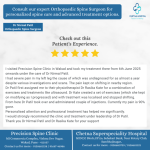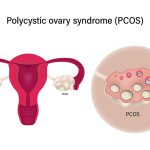Introduction
Glaucoma is a complex and progressive eye condition that can lead to irreversible vision loss if left untreated. Often referred to as the “silent thief of sight,” glaucoma typically develops slowly and without noticeable symptoms in its early stages. However, as the disease progresses, it can cause significant damage to the optic nerve, resulting in vision impairment or blindness. In this comprehensive blog, we will delve deep into the world of glaucoma, exploring its causes, risk factors, symptoms, diagnosis, treatment options, and preventive measures.
Understanding Glaucoma
Glaucoma is a group of eye diseases that damage the optic nerve, which is crucial for transmitting visual information from the eye to the brain. The most common type of glaucoma is primary open-angle glaucoma, characterized by increased intraocular pressure (IOP) due to poor drainage of aqueous humor from the eye. This elevated pressure can gradually damage the optic nerve fibers, leading to peripheral vision loss initially and potentially affecting central vision as the disease progresses.
Risk Factors for Glaucoma
Several risk factors can increase an individual’s likelihood of developing glaucoma. These include:
- Age: Glaucoma is more common in individuals over the age of 60, although it can occur at any age.
- Family History: A family history of glaucoma can significantly increase the risk of developing the condition.
- Ethnicity: Certain ethnic groups, such as African Americans, Hispanics, and Asians, have a higher prevalence of glaucoma.
- Elevated Intraocular Pressure (IOP): High IOP is a major risk factor for glaucoma, but not everyone with elevated pressure will develop the disease.
- Thin Corneas: Thin corneas may indicate a higher risk of glaucoma.
- Medical Conditions: Certain medical conditions like diabetes, hypertension, and heart disease may increase the risk of glaucoma.
- Eye Trauma or Surgery: Previous eye injuries or surgeries can predispose individuals to glaucoma.
Symptoms of Glaucoma
In the early stages, glaucoma usually doesn’t cause noticeable symptoms, which is why it’s often called the silent thief of sight. As the disease progresses, individuals may experience:
- Gradual Loss of Peripheral Vision: Peripheral vision is often affected first, leading to tunnel vision in advanced stages.
- Blurred Vision: Vision may become blurry or hazy.
- Halos Around Lights: Seeing halos around lights, especially at night, can be a symptom of glaucoma.
- Severe Eye Pain: Acute angle-closure glaucoma can cause sudden eye pain, redness, and blurred vision, requiring immediate medical attention.
It’s crucial to note that these symptoms can also be associated with other eye conditions, so regular comprehensive eye exams are essential for early detection and diagnosis.
Diagnosis of Glaucoma
Diagnosing glaucoma involves a thorough eye examination conducted by an eye care professional. The following tests are commonly used to diagnose and monitor glaucoma:
- Tonometry: Measures intraocular pressure (IOP) to assess for high pressure, a risk factor for glaucoma.
- Ophthalmoscopy: Examines the optic nerve for signs of damage or abnormalities.
- Perimetry (Visual Field Test): Evaluates peripheral and central vision to detect any visual field defects caused by glaucoma.
- Gonioscopy: Assesses the drainage angle of the eye to determine the type of glaucoma (open-angle or angle-closure).
- Optical Coherence Tomography (OCT): Provides detailed images of the optic nerve and retinal nerve fiber layer to monitor progression and assess damage.
Treatment Options for Glaucoma
While glaucoma cannot be cured, early diagnosis and treatment can help manage the condition and prevent vision loss. Treatment options for glaucoma include:
- Eye Drops: Prescription eye drops are often the first line of treatment to reduce intraocular pressure by either increasing drainage or decreasing fluid production in the eye.
- Oral Medications: In some cases, oral medications may be prescribed to lower IOP.
- Laser Therapy: Laser procedures such as selective laser trabeculoplasty (SLT) or laser peripheral iridotomy (LPI) can improve drainage or reduce fluid production in the eye.
- Surgical Interventions: If medications and laser treatments are ineffective, surgical procedures like trabeculectomy, minimally invasive glaucoma surgery (MIGS), or implantation of drainage devices may be recommended to improve drainage and lower IOP.
It’s essential for individuals with glaucoma to follow their prescribed treatment plan, attend regular follow-up appointments, and monitor their eye health diligently.
Preventive Measures and Lifestyle Recommendations
While certain risk factors for glaucoma cannot be changed, such as age and family history, there are steps individuals can take to reduce their risk or manage the condition effectively:
- Regular Eye Exams: Schedule comprehensive eye exams with an eye care professional at least once every one to two years, especially if you are over 40 or have risk factors for glaucoma.
- Follow Treatment Plans: Adhere to prescribed medications, eye drops, or other treatments as directed by your eye care provider.
- Maintain a Healthy Lifestyle: Eating a balanced diet, exercising regularly, managing chronic conditions like diabetes and hypertension, and avoiding smoking can promote overall eye and general health.
- Protect Your Eyes: Wear protective eyewear during activities that pose a risk of eye injury or trauma.
- Stay Informed: Educate yourself about glaucoma, its symptoms, and treatment options to make informed decisions about your eye health.
Conclusion
Glaucoma is a serious eye condition that requires early detection, prompt treatment, and ongoing management to preserve vision and quality of life. By understanding the risk factors, symptoms, diagnosis process, treatment options, and preventive measures associated with glaucoma, individuals can take proactive steps to protect their eyesight and maintain optimal eye health. Regular eye exams and open communication with eye care professionals are key components of managing glaucoma effectively. Together, we can raise awareness about glaucoma and work towards a future where vision loss from this condition is minimized through early intervention and comprehensive care.
#hospital #pune #pcmc #chinchwad #medical #medicalservices #dryeyetreatment #dryeyerelief #dryeyedisease#dryeyetherapy #catract #catractsurgery #catracteyesurgery #catracteyeoperation #eyedoctor #eye #glaucoma #conjunctivitis #ophthalmologist #eyediseases #eyepain #pinkeye #hazeleyes #myopia #eyeinfection #amblyopia #dryeyesyndrome #eyeproblems #motibindu













